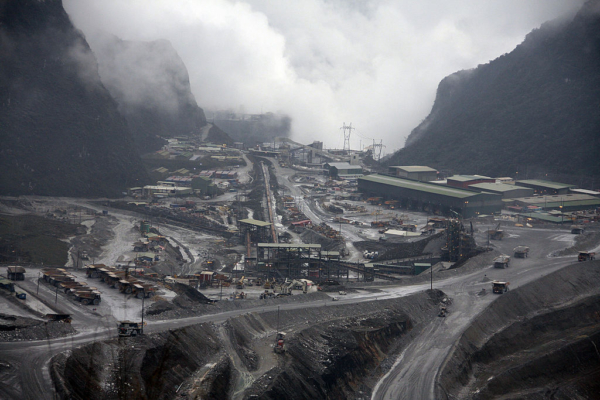In the news dated September 25, 2025, the Grasberg mine, the second largest copper mine globally owned by Freeport-McMoRan Inc in the Freeport’s Freeport Harbor, Indonesia, experienced a massive mudslide. The incident resulted in the tragic deaths of two employees and the disappearance of five individuals. As a safety precaution, production at the mine has been temporarily suspended. This unfortunate event had a significant impact on the international copper market, with copper prices surging by over 3% on Wednesday, September 24, reaching a high point in over a year.
The incident at the Grasberg mine occurred on September 8 when approximately 800,000 tons of mud and rocks suddenly flooded into the mine shaft, rapidly spreading across multiple layers, including those being worked on by the missing employees. The company is currently conducting search and rescue operations to locate the missing workers.
Freeport-McMoRan Inc issued a warning on Wednesday, stating that due to the unforeseen accident, they may not be able to meet the copper production levels as per their original contracts and have revised their production expectations for copper and gold for this quarter. The copper production from the Grasberg mine contributes approximately 3% to the global total copper supply.
The news of the suspension of operations at the Grasberg mine undeniably dealt a severe blow to the global copper market.
Although disruptions in copper supply are not uncommon, this year’s market has been notably more strained. The global supply chain for copper has been under pressure for consecutive three months: in May, flooding resulting from an earthquake affected mines in Congo; in June, interruptions occurred at two ports and smelters in Chile; and in July, a fatal accident at a national copper mine in Chile led to over a week’s halt in operations, further exacerbating the supply shortage.
Furthermore, the rising demand for copper due to the surge in clean energy and artificial intelligence technologies has added to the strain on the market.
Market experts emphasize that copper is an indispensable metal for electronic products, and when the world’s top two copper mines face disruptions simultaneously, any supply risks can swiftly drive up prices.
Given the increasing demand coupled with restricted supply, several Wall Street banks have raised their copper price forecasts. Goldman Sachs Group predicts copper prices to soar to $15,000 per metric ton, while Citigroup forecasts a potential rise to $13,000.
Helen Amos, an analyst at BMO Capital Markets, stated: “The impact of this event is immense. The copper market is currently under significant strain, and even without other factors, this event will drive copper prices higher, potentially exceeding our previous expectations.”
“It is clear that we are now facing a supply deficit,” Amos estimates that there may be a shortfall of 300,000 metric tons in the global refined copper market this year.
Bart Melek, the Global Head of Commodity Strategy at TD Securities, posited that the copper supply gap will widen over time, necessitating the use of existing inventories to meet demand.
Bloomberg highlights that this year’s copper supply disruptions underscore a decade-long issue of underinvestment. If the problems at the Grasberg mine persist, the supply of semi-processed copper will become even tighter, leading to increased costs for smelters and possible price pressures cascading throughout the global metal supply chain.
On Wednesday, Freeport-McMoRan Inc’s stock price plummeted by almost 17%, marking the largest single-day drop in five years.
In contrast, the stock prices of its competitors Glencore PLC, Teck Resources, and Antofagasta increased by 3%, 5%, and 7.4%, respectively.
(This report referenced articles from Bloomberg and MINING.COM)

